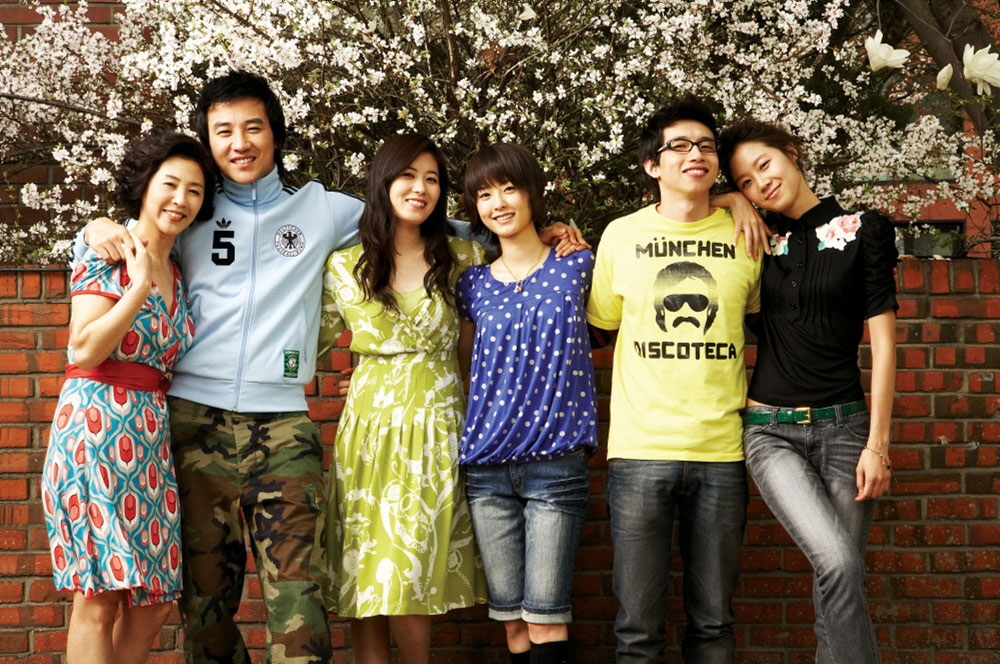가족의 탄생: Family Ties
 Written by Cole Clouse
Written by Cole Clouse
The phrase “Never judge a book by its cover” is an apt statement when talking about this movie. The poster I have seen for years is a screwball-esque family comedy with cute poses and smiling faces. What we instead get is a standard drama of three distinct, independent chapters. Even the most basic of reviews for this type of film will inevitably lead to minor spoilers. This review will keep them to a minimum, but everything in the following paragraph will talk about how the chapters do come together.The phrase “Never judge a book by its cover” is an apt statement when talking about this movie. The poster I have seen for years is a screwball-esque family comedy with cute poses and smiling faces. What we instead get is a standard drama of three distinct, independent chapters. Even the most basic of reviews for this type of film will inevitably lead to minor spoilers. This review will keep them to a minimum, but everything in the following paragraph will talk about how the chapters do come together.
Taking its title quite literally, Family Ties shows the unique ways in which families come together. Any sort of traditional marriage followed by children, followed by grandchildren, and so on and so on, Family Ties presents the formation of a more unique family dynamic in rather unconventional ways. We are first introduced to a young woman and young man sitting together on a train. Casual flirting over the proper way to eat eggs (“they just go great together with a soda”) is suddenly shifted to a young woman reconnecting with her ne’er-do-well brother and his much older wife. With this sudden revelation comes the hardship and friction between the sister and wife that results in a quiet, solemn scene showcasing the passing of seasons and years in a brief span.
No sooner does this chapter end than we are introduced to a mother–daughter dynamic that is anything but pleasant. A hot-headed, head-strong daughter at odds with the mother’s less-than-moral life decisions comes to a breaking point. The tension feels real and in an interesting reversal of conventional mother–daughter tropes, it is the daughter’s sense of morality that finds her coming head to head with the matriarch’s relationship decisions. While the dynamic is unique, the end result feels conventional. Tragedy strikes and any type of independence is cut short.
Through all of this, we then see the fruits of labor in the final chapter. We come back to our strangers on the train and realize the connections each one has to the previous chapters. Now, seeing their relationship bud and grow, we see a less intense but equally dramatic course of their relationship. Jealousy, acceptance, the proper roles of boyfriend/girlfriend within a romance, family acceptance. All come together in an honest and, quite frankly, hilariously awkward ending. A much underrated and, quite frankly, amazing aspect of Korean culture that is amazing from an outsider’s perspective is the openness and brashness of a Korean ajumma. If you are one to appreciate this, the final scene will leave you with a grin on your face guaranteed.
Not knowing what to expect from a corny-looking poster of smiles and cute poses, Family Ties is more than that. Coming across more as a collection of one-act plays connecting at the end, Family Ties gives the audience a small study on genealogy within the confines of two families. Be they blood related or adopted, siblings both step and half, family by default or by choice, we all have our stories. Some are good. Some are bad. But with each generation a new story will emerge. A new chapter to be told. One that can be told on its own but never appreciated fully until its past is explored.
The Author
Cole loves watching movies. Movies are meant to be watched. It’s a match made in heaven.





